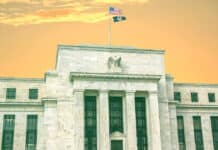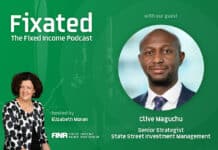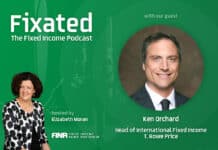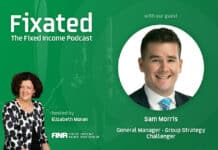
-
Big section numbers, even bigger risks
-
The case for duration may be a bit stronger in Europe than in the US
-
The investor is bearish, but this may be a good thing
The law of large numbers
We all have had to become amateur tax code lawyers recently. Starting with 899, the section that is perhaps the most controversial in the proposed US reconciliation bill, as it introduces a tax on capital flows with a view to retaliating against countries with “unfair foreign taxes”. Indeed, some foreign investors’ holdings may ultimately be subject to higher withholding taxes. While the new tax would exempt US Treasuries or portfolio interest, meaning that US fixed income is not directly impacted, it may affect equity markets through higher taxes on capital gains and dividends. In addition, it could also substantially undermine the appetite for foreign capital investment in the US, in particular foreign direct investment (FDI), a development that may go against the US government’s goal of attracting foreign investment and onshoring. It is worth flagging that non-US companies with high US exposure could be negatively impacted. That is the case, for instance, for a number of European entities.
Moving on to tariffs, we are now talking about 301 and 232, the two sections (unfair trade practices and sector tariffs, respectively) that are likely to be activated when the US judicial system deems the original tariffs under the International Emergency Economic Powers Act (IEEPA) illegal. The good news is that we may have already peak tariff fears, with the effective rate of tariffs expected to settle much lower than projected initially in April. The bad news is that section 899 is likely to reinforce the theme of the need for a higher US risk premium and the case for a weaker dollar in the period ahead.
Duration views across the Atlantic
The ECB delivered another cut last week, while sounding a bit more cautious for the period ahead. Overall, the assessment of our developed markets investment research team is that the ECB is now well-positioned to navigate current uncertainty, with the possibility of another rate cut after the summer. The message we are getting from the Fed is murkier. The last rate cut was back in December and the Fed has been firmly stuck in wait-and-see mode since then. The continued resilience of the US labor market, as illustrated by the recent nonfarm payroll number, suggests that the Fed is in no rush to go back into easing mode, especially in view of the ongoing trade and fiscal policy uncertainty. On this basis, [MFS] Market Insights is of the view that the strategic case for being long duration is a bit stronger in Europe than it is for the US. In the US, exposure to credit does make a lot of sense, but essentially as an attractive carry play reflecting the appealing valuation of total yields. Rate compression driven by central bank policy action is unlikely at this juncture to be a major driver of total returns. Meanwhile, in Europe, European credit continues to be well-positioned, especially in the context of the great global rebalancing that is ongoing.
Also read: Mid-year Perspectives 2025: Cutting Through The Noise
The investor remains bearish
Looking at the whole range of market-based risk appetite indicators, it is worth noting that most of them continue to signal a cautious bias towards risk-taking. For instance, the demand for gold, known to be a defensive asset, has gone up substantially, which means that the price ratio of gold to copper is now at historically highs, typically a strong risk aversion signal. Likewise, in the FX market, the AUD-JPY cross is now well off its peak, pointing to the outperformance of the safer Japanese yen. The Swiss Franc, another safe haven, is up over 10% against the USD year-to-date.[1] Meanwhile, the well-followed BofA bull-bear indicator remains in bear territory, albeit marginally.[2] Last but not least, the American Association of Individual Investors (AAII) net sentiment reading stands at minus 9, in bearish territory.[3] This is overall broadly consistent with our fixed income investment team’s approach, with their average tracking error standing at the lower end of the historical range. Historical data, however, may provide a reassuring message. To be clear, the compliance disclaimer does apply here, and historical data may not help us predict the future. The pattern is nonetheless pretty obvious. Since 1987, there were 30 observations when the AAII net reading stood at the same level as it is today—assuming a range of minus 7 to minus 11, ie a two-point window on each side of the current number. First of all, the S&P500 was up over the following 12 months 28 times out of these 30 episodes. That is a 93% frequency for positive returns. More importantly, the median for the subsequent one-year return stood at 14.6%, an above-average performance. This did come with a significant range. Prior to the global financial crisis, the US investor back in February 2008 was broadly as bearish as they are now, and rightly so, as the following 12-month return stood at -45%. At the other extreme of the range, back in July 1996, a sentiment reading of the same order as it is today paved the way for a subsequent return of 49%. Overall, the investor is still bearish, but a bit of bearishness might not be a bad thing after all.
[1] Sources: Bloomberg. Data as of 9 June 2025
[2] Sources: Bank of America. Investment Strategy: The Flow Show: Bull-bear indicator. Data as of 5 June 2025.
[3] Sources: Bloomberg, AAII. American Association of Individual Investors (AAII) net sentiment reading. Data as of 5 June 2025.































